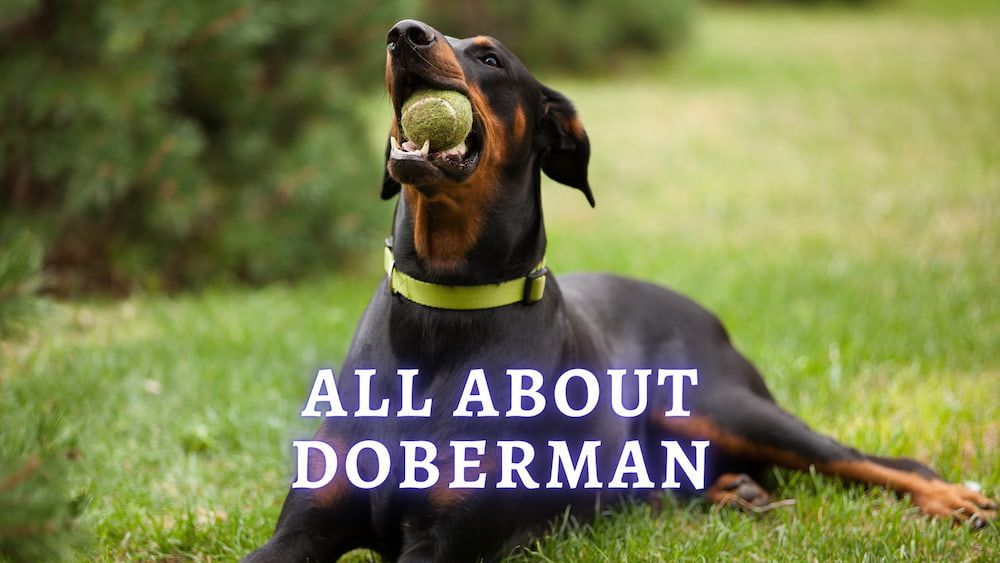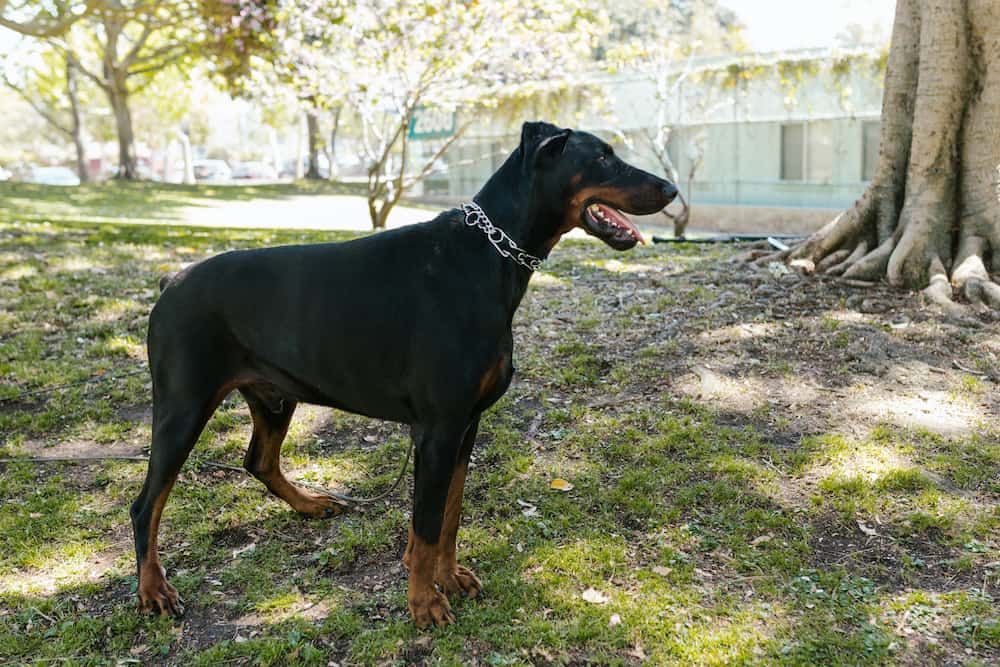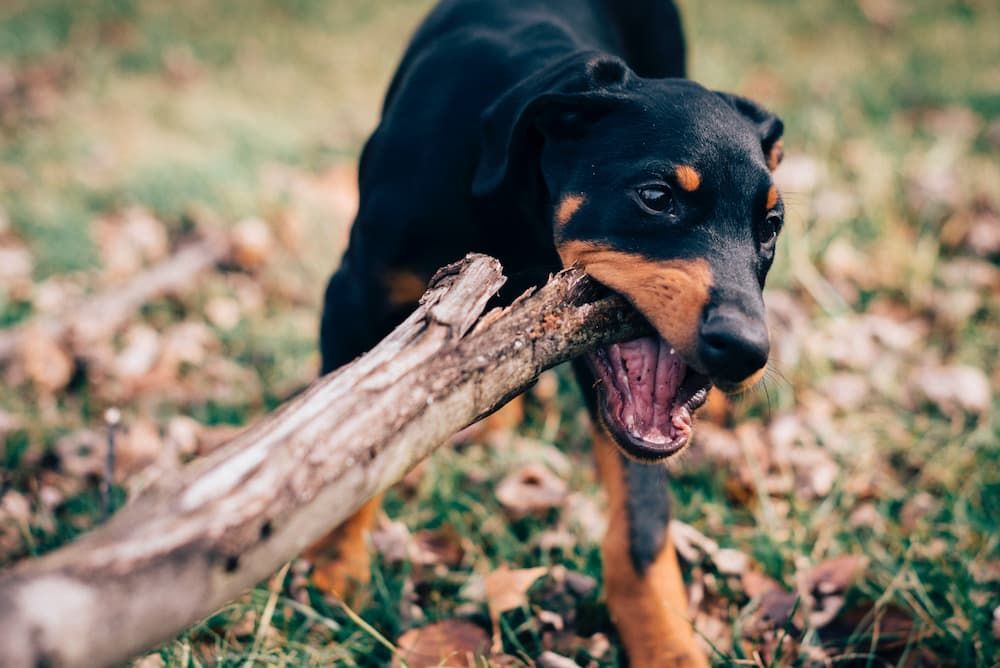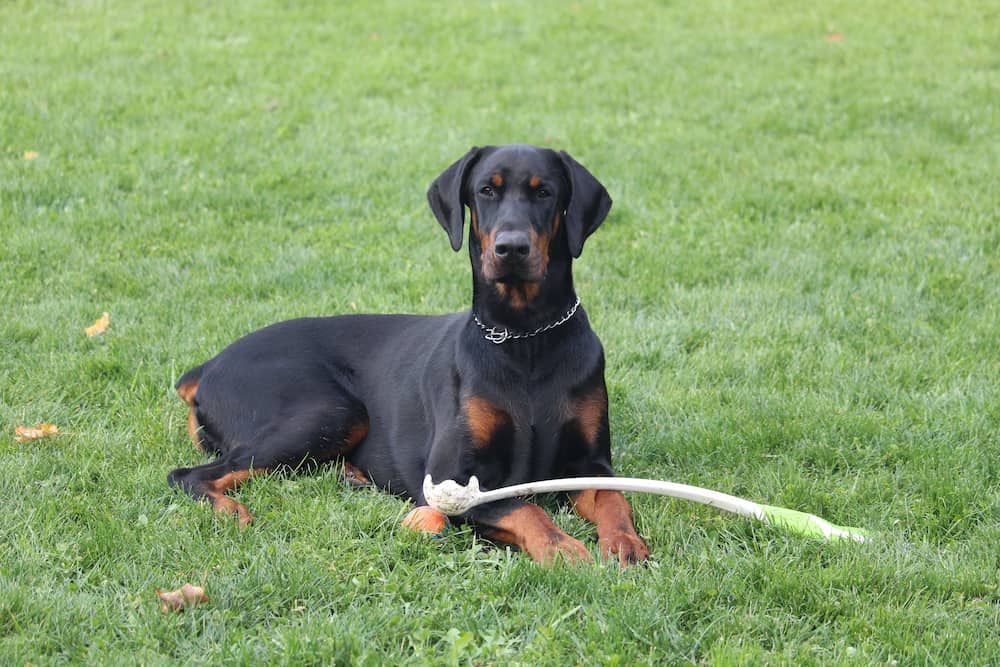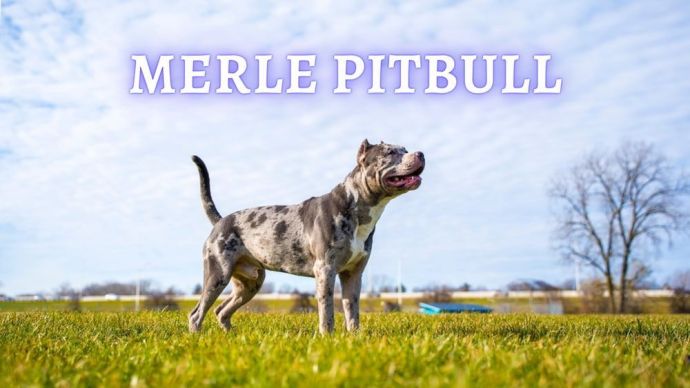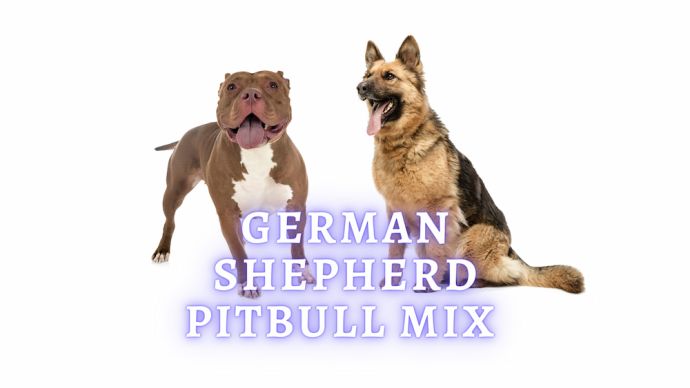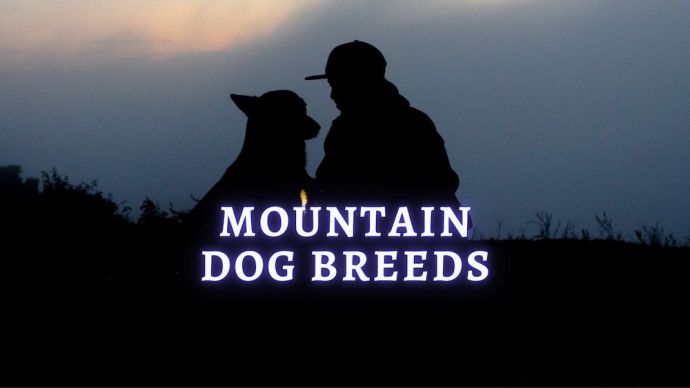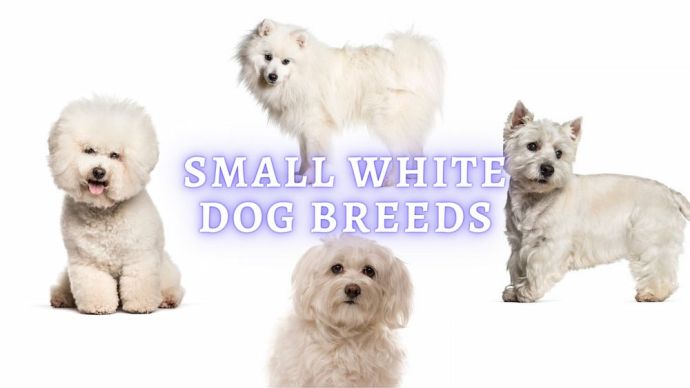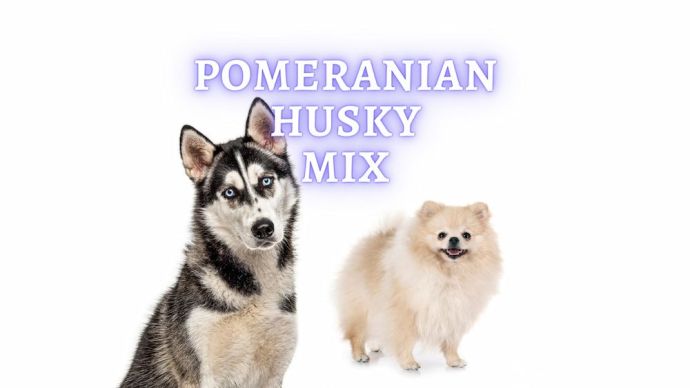Doberman: All You Need To Know About Doberman Pinscher
Written by:
Author: Scott Jeffrey
Scott is a professional blogger with 12+ years of experience in writing, and holds an MA in anthropology. He has two cats as housemates. Also, Scott is passionate to research on pet-related topics such as dog training, puppy feeding, and cat health.
View all 63 articlesLearn about our editorial process and veterinary review board.
Viewed: 93
Updated on: 03/07/2023
The Doberman pins there are the dog is known for its incredible physicality and extremely keen intellect. As a dog commonly associated with royalty and nobility, this peerless dog breed is known as one of the best guards in the world. The Doberman pinscher is highly muscular and fast, and they stand up to 28 inches tall.
As they are considered large-sized and best suited to work in security and as guide dogs. Their ability to receive training as a Doberman puppy makes them perfect for dog sports.
With a body that is exceptionally sleek, their wedge-shaped head makes Dobermans instantly recognizable, and they’re also well known for their rust markings and black coat. If you’re looking for one of the most well-recognized guard dogs in the world, this is a popular choice and also a loyal family dog.
| Height | 24-28 inches |
| Weight | 60-100 lbs |
| Life expectancy | 10-12 years |
| Good family dog | Yes |
| Shedding | Moderate to high with short hair |
| Energy Level | High |
| Coat Colors | Red, Black, Fawn |
| Training | Needs regular mental stimulation |
Breed History
The breed originated in Germany throughout the late 19th century and started primarily as guard dogs. The exact ancestry and the dog they are created from is mostly unknown, but they are believed to be a dog breed derived from several types of guard dogs. Their lineage is estimated to come from a black/ tan terrier, Rottweiler, and German Pinscher. As a dog with a very regal appearance and slim and athletic build, they have been commonly used as guards for generations.
The original breeds were produced by Louis Dobermann, who lived in Apolda, which is a small district of Germany. As a tax collector, it was difficult for him to collect from the defendants in the area that were attacking him as he made his rounds. It was a town dog catcher who often took along a dog for protection. He began to breed his dogs and eventually produced the original and early Doberman pinscher.
There is, unfortunately, no record of what types of dog he bred to create the Doberman pinscher, and when he died in 1894, the true origins would become unknown. Throughout the end of the 19th century, German breeders continued their work and considered the breed one of the best-trained and most excellent guard dogs. Although the breed is known for being somewhat headstrong and aggressive, they can be trained to be excellent companion dogs.
It is estimated that Louis Dobermann would have made his first Doberman dogs from black and tan terriers like the tan manchester terrier and dog breeds like the Rottweiler. Both known as intelligent dogs, these other dog breeds would come together to make the first Doberman breed and eventually military dogs.
The German kennel club in the 1900s recognized the Doberman pinscher as a breed, and in 1908 the first Doberman pincers made their way over to the USA to compete in American dog shows. The American kennel club would go on to name the Doberman breed shortly after that. Throughout World War I, Doberman pincers in Europe declined severely, and this often came down to people being unable to feed the large breed of dog. Other dogs would become more popular for breed clubs during this time, and small dog breeds were paramount. Doberman pinschers were not required as military dogs for some time.
After 1921 the dog breed was sought after in the United States during World War II. They were commonly used as a service dogs and coveted amongst soldiers returning to the United States. Readers have worked consistently to make the Doberman a more protective and loyal family dog. The latest Doberman pincers are some of the most affectionate and loyal family companions you can have.
Appearance:
The Doberman pinscher appears to be a dog of about medium size with a square and compactly built body. They are braided and built for speed and endurance, and their height is usually around 28 inches tall. They have a length and head, neck, and legs in proportion to their body and a very smooth and short coat. The invisible gray undercoat on the neck and black, red, and fawn colors are quite common with this breed. Sometimes, they have a white patch on their chest and some sharply defined features along their eyes and muzzle.
Interesting Facts about the breed:
- They are great at tracking: Although they are known primarily as guard dogs, they have powerful noses and can be great at tracking and sniffing things out. Doberman pinschers work quite well as a dog that can work with law enforcement.
- They are fast learners: Doberman pincers are some of the fastest learners you can get in the family dog for any obedience training. If you’re looking for a breed that will be easy to train, this is one of the most intelligent you can find.
- They are agility champions: although we commonly think of some of the best agility breeds as border collies or other herding dogs, Doberman pinscher is exceptionally well-equipped for agility because of their speed and intelligence.
- Doberman pincers assume alpha roles: they will try to assert their alpha roles in a household quickly. Ensure you are a strong leader and perform early and consistent training to establish yourself as a good pack leader.
Personality
The breed is super active and very intelligent. Doberman pinscher puppies must be appropriately socialized to be loyal and trustworthy dogs. If the puppies are trained well, they can be fun-loving and great family pets, but they are natural protectors who react quickly if a family member is threatened. Doberman pincers are not aggressive without proper provocation.
Training Doberman pincers can be easy because they’re brilliant. The breed needs to receive regular stimulation, which can often mean changing lessons and trying new tricks. They’ll have their own ideas and can be stubborn throughout the training process.
Dobermans remain with their puppy energy for the first 3 to 4 years of life, and regular training and socialization can be essential to ensure that the puppy can use other dogs and experiences. Doberman puppies can be well-rounded dogs if exposed to various experiences, sights, and sounds as they age.
Puppy class is often recommended as you are training your Doberman.
Activity and training
For the most part, the temperament of this breed is usually quite watchful and energetic. They’re loyal and obedient and often need to be trained to avoid feelings of anxiousness or aggressive behavior.
They should be well-trained, and they can be wonderful family dogs. Proper socialization with other animals and children is essential to keeping your dog respectful of other family members. It’s important always to teach children how to approach and touch dogs and never to disturb an eating or sleeping dog. Pet parents need to be ready to address personality traits and unwanted behaviors through early training. When they are properly socialized, they are family guardians who are sweet and affectionate.
An extremely intelligent breed is important to prepare them for a variety of situations and to train them often in new experiences. Doberman pinschers can learn a number of tasks related to guarding dog behavior, agility, games, and other commands. They make excellent service dogs.
Health
Doberman pincers are generally quite healthy, but there are certain health conditions that they can be prone to as they grow older. They can have some genetic health problems taken from Doberman parents. Some of the important health conditions that you should be aware of if you’re going to adopt this region include:
Von Willebrand’s disease:
This is an inherited blood condition that interferes with clotting ability. It can often cause bleeding in the gums, stomach, or intestine, and this could require regular transfusions.
Hip dysplasia:
This is a common condition where the thigh bone does not fit snugly into the hip joint. Arthritis can develop as your dog ages.
Hypothyroidism:
This is a disorder where the thyroid gland can cause hair loss, obesity, lethargy, dark skin patches, and epilepsy.
Cardiomyopathy:
This is often characterized today by a weakened heart, and treatment can include fluid therapy, oxygen, and medication to improve heart function.
Bloat:
Also known as gastric dilation-volvulus, this condition affects deep-chested dogs such as Doberman pincers and large breed dogs that eat too rapidly. Distended abdomens, added stretching, or excessive drooling can all indicate this potential condition. The stomach rotates with this condition, causing an inadequate blood supply to the stomach and spleen. Feeding your pet with soaked food or a bowl and restricting food intake can be crucial to slow them down. Doberman pinscher club recommendations often include meal times commands to keep a puppy from eating too fast.
Coat care and grooming
They have an incredibly sleek and short coat that lies close to the skin, requiring minimal grooming. The colors are often black, red, blue, or another color and can have markings along their eyes, chest, and muzzle. Their rust markings are often accents to the main coat pattern. Regular and weekly brushing with grooming is often all you may need to reduce the amount of shedding across your home. Frequent bathing is unlikely because of can often shed away dirt and mud.
Brushing their teeth at least 2 to 3 times weekly will remove bacteria and tartar buildup. Trimming nails for at least one month or making them can prevent painful errors and other problems during running.
As part of the regular grooming routine for a Doberman, check their ears weekly to spot the signs of infection. Wipe your dog’s ears regularly with a cotton ball damped in an ear cleaner.
Checking their body for other rashes or sores and the importance of that, you can spot potential health problems early and check your pet for the chance of an allergic reaction.
READ MORE: Best Dog Food for Skin Allergies
Feeding and nutrition:
Feeding kibble or wet food is often recommended for the Doberman pinscher needs to receive a balanced diet. Easily digestible protein will ensure that they keep healthy muscles, including their heart muscle, and omega-3 fatty acids will ensure that you can support healthier skin, coat, and heart health.
Elevated bowls or restricted feeding bowls can help with the chance for bloat and other victims where your dog might eat too quickly.
RELATED: Best Dog Food for Dobermans
How much do Doberman puppies cost:
Doberman pinscher puppies commonly cost between $1200-$2500 on average. The domain cancer breed can be a bit expensive compared to other types of purebred dogs. When you are seeking other breeders, make sure you are going to a reputable breeder with an appropriate history for breeding Doberman puppies. If you can meet the parents of the puppies they have or see some of the breeder’s credentials, such as awards, this can be a big help in deciding what puppy you should choose. Your puppy’s lineage is significant, and you should choose a puppy from a healthy lineage with dogs that don’t have extensive care problems.
Training
Going to a puppy class for obedience class is often recommended as you’ll be able to socialize your government answer with other puppies and people. Training in a group setting is an excellent half that you can use to expose your puppy to different distractions and get them better suited to training in distracted areas.
Going to the dog park for training can also help introduce your Doberman pinscher to other dogs and people. Keep in mind that some people identify Doberman pincers as an aggressive or guard breed, so it might be rare for people to approach you and your dog.
Adoption and rescue
Doberman pinscher dog adoption or rescue program can be an excellent way to have this purebred breed without worrying about paying the full price. Adoption and rescue programs will often cost several hundred dollars for the dog and allow you to find an older dog that better suits your lifestyle.
If you’re interested in getting on the list or an adoption or rescue program, contact some local breeders or consult with a local shelter to adopt a rescue Doberman pinscher.
Conclusion
Overall, the Doberman pinscher puppy is an excellent dog that you can consider for a family pet or as a new member of an older family. They are excellent guards and they are also extremely easy to train if you are willing to put in the time as they grow. As fairly low-maintenance care dogs, they have short coats and require little in the way of grooming or care. If you’re looking for a smart and low-maintenance breed that’s going to be highly loyal and very affectionate, this is an excellent breed that you should consider for your next adopted puppy.
FAQ
Is A Doberman a good family dog?
The Doberman can be an excellent and loyal family dog if it is well-trained initially. Proper socialization of any pets and instruction for your children can be crucial. Minimizing any of the disruptions that your household experiences such as loud noises or play fighting, can help to prevent your dog from intervening or causing an aggressive scene.
Is Doberman aggressive dog?
The Doberman pinscher is not an overly aggressive dog if they are well-trained. If they have commanded in place through training, their aggressive behavior can often be squashed quite quickly. Dobermans only get overly aggressive when they are put in a position to guard a family member or react to an aggressive act.
What two dogs make a Doberman?
The dogs that make up the Doberman pinscher are not entirely known. The creator of the Doberman pinscher breed died before he had a chance to document the breed, but it is estimated that part of the breed is a Rottweiler, with the other part being a terrier.
Is Doberman good or Rottweiler?
Both breeds are an excellent choice if you’re looking for a large breed dog capable of guard dog tasks. Rottweilers are known for being a bit more challenging to train and for being a bit heavier, but both breeds would be an excellent choice if you are looking for a guard dog.
Are Doberman Pinschers a smart dog?
The breed is known for being extremely smart and protective. They’re known for their loyalty as well as their intelligence, and they can be excellent candidates for guard or service dogs.
What’s the difference between a Doberman Pinscher and a Doberman?
Doberman and Doberman Pinschers are the same breed.
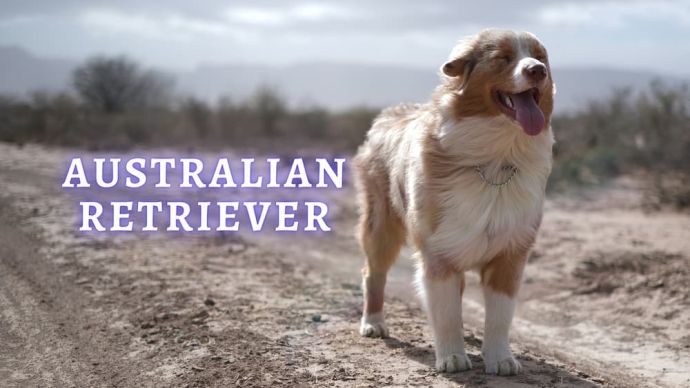 Dog Breeds Australian Retriever: All About Australian Shepherd Golden Retriever Mix
Dog Breeds Australian Retriever: All About Australian Shepherd Golden Retriever Mix - 674
- 0
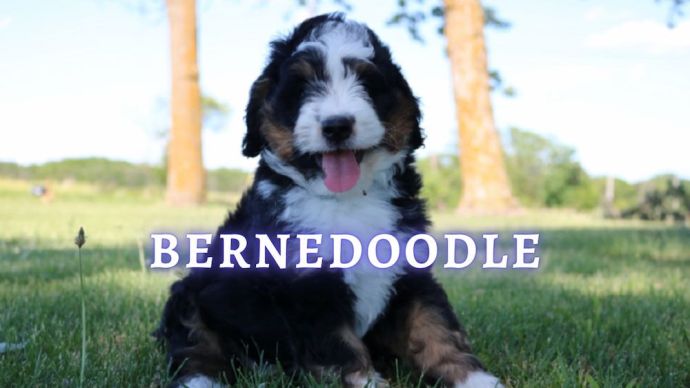 Dog Breeds Bernedoodle: Bernese Mountain Dog and Poodle Mix Personality, Temperament, Grooming and Adoption
Dog Breeds Bernedoodle: Bernese Mountain Dog and Poodle Mix Personality, Temperament, Grooming and Adoption - 639
- 0
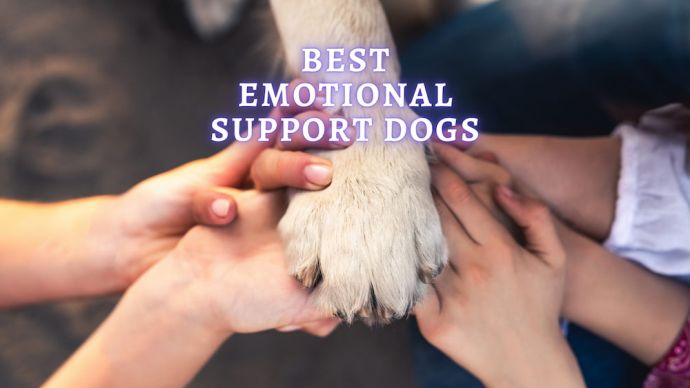 Dog Breeds Best Emotional Support Dogs: 16 Best Breeds for Emotional Support Dogs
Dog Breeds Best Emotional Support Dogs: 16 Best Breeds for Emotional Support Dogs - 134
- 0
 Dog Veterinary Tips Why is my Dog throwing up: Causes and Preventing (Veterinary Advice)
Dog Veterinary Tips Why is my Dog throwing up: Causes and Preventing (Veterinary Advice) - 23424
- 5
 Dog Care Why Is My Dog Bleeding From Its Butt? Causes and treatment of rectal bleeding in the dog
Dog Care Why Is My Dog Bleeding From Its Butt? Causes and treatment of rectal bleeding in the dog - 22076
- 0
 Dog Care My Dog Keeps Scratching His Mouth: Reasons Why Your Dog Scratching Face
Dog Care My Dog Keeps Scratching His Mouth: Reasons Why Your Dog Scratching Face - 17561
- 1









